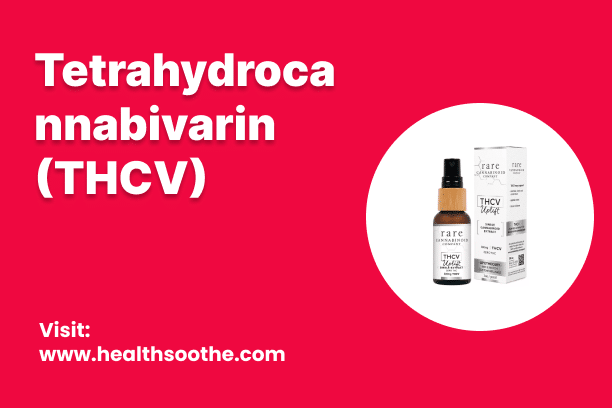Tetrahydrocannabivarin (THCV) is a naturally occurring cannabinoid found in cannabis. Similar to other cannabinoids, THCV belongs to a separate group known as "varin" or V cannabinoids, which have slightly different chemical structures compared to the more common cannabinoids.
These varin cannabinoids, including THCV, have chemical names ending with "varin" and possess modified chemical chains. Despite their structural similarities to main cannabinoids, such as THC, even minor changes in chemical bonds can lead to significant differences in their effects.
In essence, THCV can be defined as a less potent form of THC in terms of its intoxicating properties. However, like other variants of dominant compounds, THCV also exhibits unique characteristics that make it worthy of independent research and study apart from THC.
Origins
The origins of varin cannabinoids in the evolution of Cannabis sativa are largely speculative. Nature has a tendency to produce redundant sets of compounds, organic structures, or even entire species for reasons that remain unclear.
It is uncertain whether varin cannabinoids were early precursors to the dominant cannabinoids found in cannabis or if they were meant as improvements on existing cannabinoids. It's also possible that both sets of cannabinoids were meant to coexist and emerged simultaneously. Understanding these aspects will require significant advancement in cannabis research beyond its current state.
Structure
THCV differs from THC in a straightforward manner: it has two fewer hydrocarbon groups on its tail, referred to scientifically as a "lipophilic alkyl chain¹." While scientists are continually studying cannabinoids, it's logical to assume that each part of the THC molecule contributes to its psychoactive effects to some extent. The reduced potency of varin cannabinoids, such as THCV, could be attributed simply to the absence of these two hydrocarbon groups.
What are the effects?
Research on THCV has uncovered several potential effects, though more studies are needed to confirm these findings. Here's an overview of where the current research stands:
- Reduced Appetite: Contrary to the typical association of cannabis with increased appetite, THCV might have appetite-suppressing properties. This is believed to occur through THCV's ability to block the CB1 receptor, which is known to stimulate appetite. Animal studies have shown that THCV may reduce food intake and weight gain. Additionally, a study in 2013 suggested that THCV could improve glucose intolerance related to obesity. However, human studies have yielded mixed results regarding THCV's impact on appetite and body weight.
- Other Potential Effects: While more research is needed, preclinical animal studies suggest that THCV may have potential therapeutic applications in various conditions, including Parkinson's disease, psychosis, bacterial inflammation, acne, fatty liver disease, pain, and epilepsy. Human research on THCV is limited but has explored its potential to mitigate some negative effects of THC, such as reducing increased heart rate, subjective feelings of intoxication, and verbal recall issues.
Overall, while THCV shows promise in various areas, further clinical research is necessary to fully understand its effects and potential therapeutic benefits in humans.
Read Also: pearls cough medicine dosage
Pros and Cons of THCV
Pros:
- Appetite Suppression
- Milder Psychoactive Effects
- Potential Therapeutic Benefits
- Increased Yield and Accessibility
Cons:
- Limited Availability
- Lack of Extensive Research
- Legal and Regulatory Considerations
- Mixed Evidence on Effects
Differences Between THCV and Tofu Cat Litter
THCV (Tetrahydrocannabivarin):
It is primarily used in the context of medical and recreational cannabis products, including edibles, beverages, and concentrates.
Tofu Cat Litter:
It is used as a litter material for cats, offering good odor control, clumping capabilities, and biodegradability.
Alternative to THCV
Appetite Suppression:
If you're seeking appetite suppression similar to THCV, you might consider other cannabinoids like CBD (cannabidiol) or CBG (cannabigerol). Both CBD and CBG have been studied for their potential effects on appetite regulation, although their mechanisms may differ from THCV.
What does THCV do?
THCV primarily interacts with the CB1 and CB2 receptors, similar to THC, which are responsible for the characteristic effects of cannabis. However, due to its distinct effect profile, THCV is believed to interact with other aspects of human biochemistry as well.
Anecdotally, the effects of THCV are reported to be significantly milder compared to THC. Instead of increasing hunger, which is typical with THC use, THCV is said to reduce appetite, leading some users to report weight loss as a result.
Is THCV the same as THC?
THCV and THC differ significantly in several aspects, including their effects, legal treatment, and availability. It's important for individuals not to assume that THCV will be as readily available or provide the same effects as THC when using or formulating products containing THCV.
- Effects: THCV and THC have distinct effects on the body and mind. While THC is known for its psychoactive properties that can lead to euphoria, relaxation, and increased appetite, THCV is often described as producing milder effects with reduced intoxication and appetite suppression.
- Legal Treatment: The legal status of THCV and THC can vary depending on local regulations. In many places, THC is subject to strict legal controls due to its psychoactive nature, while THCV may have different legal considerations due to its differing effects and potency.
- Availability: THCV's availability can differ significantly from THC. While THC is commonly found in cannabis products, THCV may be less readily available and may require specific sourcing or formulation.
Where to find it
Vaught notes that the availability of THCV has been quite limited, primarily due to the scarcity of plants capable of producing significant quantities of this compound. These plants have typically been challenging to cultivate, resulting in low yields and making THCV a rare and expensive cannabinoid in the supply chain.
However, there's been a trend of isolating THCV from plants and incorporating it into various manufactured products like edibles and cannabis beverages. This approach not only increases yield and accessibility in the supply chain but also encourages growers to cultivate more THCV-producing plants.
Furthermore, this development opens avenues for traditional products such as flower or vape cartridges that contain THCV directly sourced from the plant, rather than being infused with an isolate.
Some specific strains known for their THCV content include Dayslayer, which is considered a prominent THCV genetic in the market. Additionally, strains like Durban Poison and Pink Boost Goddess (developed by Emerald Spirit Botanicals) are available in consumer markets where adult-use cannabis is legal, offering options for those interested in THCV-rich products.
Conclusion
THCV, although initially limited in availability, is garnering attention and interest in the cannabis market due to its unique properties and potential benefits. While challenges such as limited plant sources and production difficulties have historically hindered its widespread adoption, recent advancements in isolating and infusing THCV into various products are paving the way for increased accessibility and consumer choice. Strains like Dayslayer, Durban Poison, and Pink Boost Goddess highlight the growing diversity of THCV-rich options for consumers in regions where adult-use cannabis is legal. As research and cultivation techniques continue to evolve, THCV's role in the cannabis landscape is poised to expand, offering users new experiences and potential therapeutic applications.



